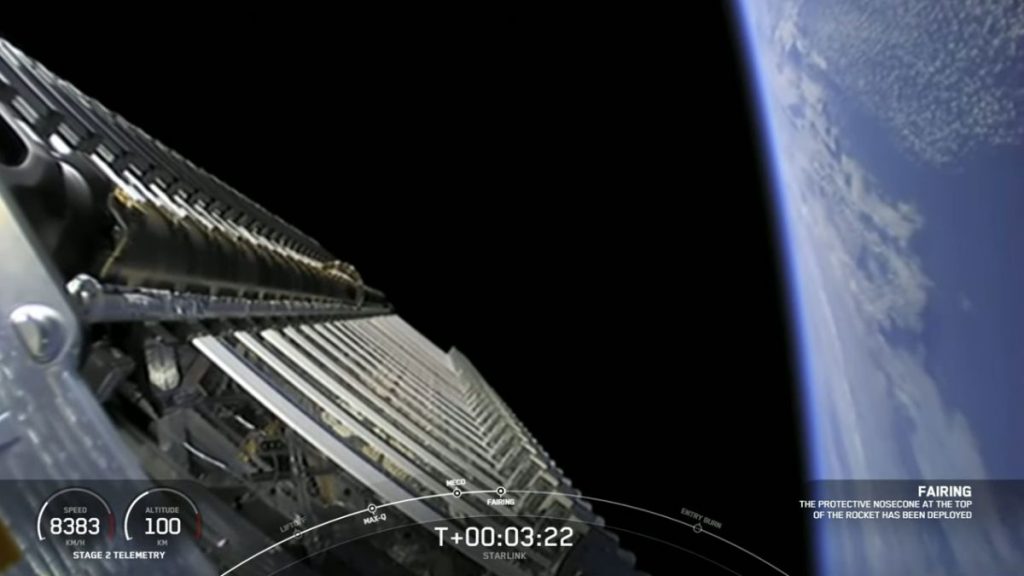
How SpaceX’s Starlink Maritime launch will affect cruise lines and satellite providers (Image Credit: Space.com)
Connection and WiFi on board cruise ships has been notoriously slow since its inception. In the same way as with airplanes, cruise ships have traditionally used gyroscopic satellites that have to recalibrate the signal every time they move. A ship must also have a direct “line of sight” to a satellite in order to exchange data, which isn’t always the case. Due to the height of the surrounding mountains, cruise ships passing through the renowned Norwegian fjords, for example, may experience satellite signal loss. This leaves a rabble of angry passengers.
Now Elon Musk’s SpaceX has announced the availability of its Starlink service for maritime vessels. This follows the launch of thousands of SpaceX satellites into low Earth orbit (LEO), promising incredibly low-latency IP networks with download speeds of up to 350 mbps. Although many Starlink customers also reside in cities and other areas with good connection, the company’s primary goal is to connect communities that currently lack internet access or have inadequate connectivity.
Satellites for at-sea internet connections can cost a cruise company an enormous amount of money, ranging from hundreds of thousands to millions of dollars — maritime communications companies renting bandwidth can more or less charge what they want. Now, with a one-off equipment purchase of $10,000 and a monthly charge of $5,000 for two Starlink terminals, cruise ships can slice their costs dramatically for potentially a much faster service.
How will this affect the operations of other satellite companies, and what opportunities does it open up for cruise lines? Let’s dig a little deeper.
Related: SpaceX’s Starlink megaconstellation launches in photos

Faster speeds but limited coverage
SpaceX submitted a request at the back end of last year to the International Bureau of the U.S. Federal Communications Commission (FCC), with the Committee permitting the temporary use of Starlink satellites at latitudes greater than 53 degrees. The new inter-optical connection, or lasers, will be utilized to serve consumers worldwide.
“Laser links in orbit can reduce long-distance latency by as much as 50%, due to higher speed of light in vacuum & shorter path than undersea fiber,” Elon Musk explained in a tweet last year (opens in new tab).
Many cruise ships have already made the switch to Starlink since the service launched last month. One business claimed that by connecting Starlink to geostationary satellite internet (VSAT), latency was reduced by 95% and costs were cut by 70%. Furthermore, an account from a journalist testing the internet speeds on a Royal Ferries Cruise ship found that a download speed of 77.03 mbps and upload speed of 15.72 mbps was reported by “The Surf & Stream” service. According to the account, they were able to stream movies and shows without any buffering whatsoever.
The main downside is that the service currently only operates in the coastal seas of the USA (excluding Alaska), Europe (except the majority of Norway, Sweden and Finland), Australia, Brazil, Chile, the majority of southern Australia and New Zealand. SpaceX claims that it will progressively expand the service to new areas starting in the fourth quarter of 2022.
Fighting talk from other players
There’s no disputing it: Starlink’s movements put other satellite providers in a difficult position. However, some don’t seem particularly worried. A representative for Inmarsat, the U.K.-based satcoms company, recently said:
“When you look at some of our competitors, particularly the ones you call new entrants (SpaceX and OneWeb), they simply aren’t well-positioned to meet the needs of the market — it’s very hard to provide that kind of coverage.”
“The first-generation LEO constellation operators don’t have the wherewithal to deliver the security and resilience that customers need,” he added.
While this approach may seem brazen and aggressive, the lack of coverage is definitely a potential sticking point depending on the location of the cruise lines’ operations. The other satellite provider mentioned in the quote, OneWeb, has already been previously bailed out with a £400 million investment from the U.K. government. Given that SpaceX has already launched more than 3,000 Starlink satellites, the company is in a good position to continue expanding its operations in the cruise ship industry.
It’s indisputable that the low-latency internet offering for cruise ships via Starlink Maritime’s service could be transformative. Cruise ships will be able to provide customers with activities that only high download speeds can provide, such as buffer-less video streaming or video chatting with loved ones. Other providers will have to dramatically increase their satellite LEO output or adopt similar technology as Starlink Maritime to compete over the next few years.
Nicholas Kyriakides (opens in new tab) is co-founder and COO of both netTALK CONNECT (opens in new tab) and netTALK MARITIME (opens in new tab). He contributed this article to Space.com’s Expert Voices: Op-Ed and Insights. Follow us on Twitter @Spacedotcom (opens in new tab) or on Facebook (opens in new tab).








